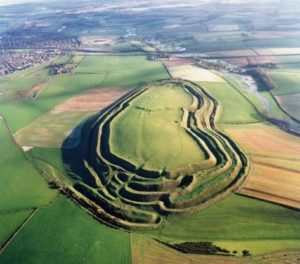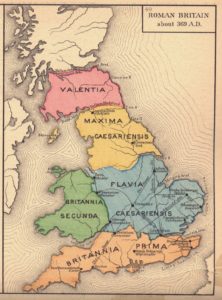Below is a detailed article of the conditions of Britain after the Roman Invasion. Many factors such as economy, social structure, political structure, trade, and administration changed after the Roman Invasion. Let us see how these changes occurred and what were the effects of these changes.
How was Britain after the Romans invaded?
After the Romans invaded England and settled in they captured the Maiden Castle in Dorchester in 44 AD. They also moved toward South Britain and declared it a part of the Roman Empire.

The city of London was founded at between 44 AD to 47 AD by the Romans and called ‘Londonium’. They built a bridge across River Thames and connected different parts of South Britain to this area. All main operations took place at this place. During this time, they also founded a small colony of retired officers in the county of Colchester. Before London, Colchester was the capital of this newfound empire.
Before the Roman invasion, the land of England was full of forest cover. It was dangerous and mysterious away. It was full of marshy land, mist all over and warriors ready to hunt and tackle among the settlements. The Romans invaded Britain with an army that was very large in number that is, more than 40000 people with horses and some on foot.
They completely destroyed and crushed the tribes living in Britain like the Catuvellauni – a tribe from the southeast of England. They also destroyed the tribes of the Camulodunum which is Colchester in present-day and set up on of their main camps in the area. Not only that, they also destroyed communities, cultures and different traditions that existed back in the day.
The battles among the Britons and the Romans destroyed crops, animals, settlements and many times also caused a fire that destroyed the complete habitats of the residing people. This wipes out complete families that were living in the place. The tribe of Iceni was wiped out in a similar manner when Boudicca the Queen was defeated and poisoned herself to death.

The frontiers of the empire were always under attack and constant reinforcements were required throughout the Roman Invasion. Construction of Hadrian’s wall denoted the high interference of the Roman Kings from Rome and also the solid constructions that were done in the times.
Christianity spread into the Roman empire. In the year 63 AD, one of Jesus’s disciple – Joseph of Arimathea went on along the Roman empire to teach the gospel across the nations. He came to the Roman empire of England where he taught people Christianity and also died in the same place.

Roman customs, laws, culture, and religion came to adopted by the Britons. The Romans constructed bathhouses, buildings, palaces, political places, and churches in Roman Britain. They also promoted trade and industry in Britain. They developed London and made it the center of all operations. Basilicas, roman palaces for the governor, amphitheaters were all built in London. This began in 70s AD and continued after the 400 AD even after the Romans left.
From the 100 AD onward the Romans built roadways of more than 8000 miles in England. This enabled extremely easy flowing and smooth trade amongst the Roman empire.
In the year 211 AD, the Roman British empire was divided into two provinces for easy administration. The southern province was the ‘Britannica Superior’ and the northern province was the ‘Britannica Inferior’. It was called superior as it was closer to Rome compared to the northern province. London was the capital of the south and York was the capital of the North. This made London the center of all administrations from that time.

As London was most important to the Romans and the center of all administrations, another wall was built along the banks of River Thames. The city of London needed to be highly safeguarded from the west germanic tribes that were trying to enter England.
The Roman empire came more into power in 300s AD, when Constantine was made the Emperor of Rome. He was the youngest, diplomatic and strategic ruler of all times. During his rule, in the year 312 AD, the Roman emperor was Constantine who converted the Roman empire into Christianity. Therefore, Christianity became the official religion of the Roman Empire and of Britain that was under the Roman Rule. This continued for Britain even after the Romans left. However, many pagan religions were also seen to exist.

During the year 360 AD, there were numerous attacks from the barbarians, the Picts, Scots, Saxons, and the Franks. They launched raids into Roman Britain. They plundered towns and destroyed crops to force an entry into the empire. Help was sent to Britain from Rome to fight these barbarians.
Barbarian attacks continued for many years. The emperors and military generals began to migrate from Roman Britain to Rome for other matters and conquering other territories.
In this way, the West Germanic influence increased in England, and eventually, they began to settle in. This marked the end of the Roman Rule in England.